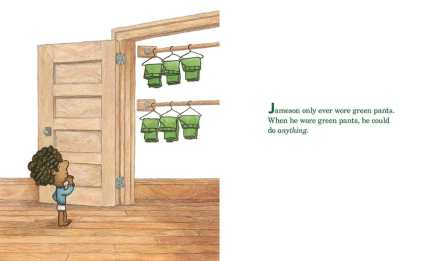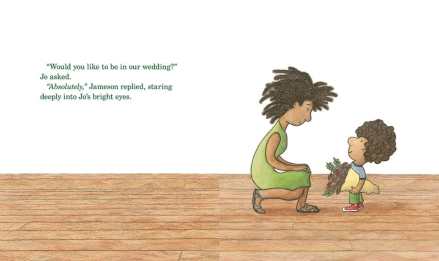About the Holiday
Instituted by Ashley Lauren in 2016, the day encourages people to relive and celebrate their best dress memories. It’s also a day to honor those designers who design the styles that create a splash, feel comfortable, and make a statement. To celebrate today, get together with friends and talk about your favorite dress memories then go shopping and get ready to make some more!
Abrams sent me a copy of Along Came Coco to check out. All opinions are my own. I’m happy to be partnering with Abrams in a giveaway of the book. Details are below.
Along Came Coco: A Story about Coco Chanel
By Eva Byrne
Coco Chanel, born in 1883, grew up in an orphanage, “a strict convent tucked away in the French countryside.” While the girls wore identical uniforms and followed the nuns’ rules, Coco always found a way to be herself: when she learned how to sew, she used her creativity to make dolls for her friends, and each night as she brushed her curly hair the required one-hundred times, she vowed that when she grew up she’d cut her hair short.

Copyright Eva Byrne, 2019, courtesy of Abrams Books for Young Readers.
Sometimes Coco was allowed to visit her grandparents in Moulins and her Aunt Louise in Varennes. During these trips she saw fashionable ladies strolling through the city and watched her aunt transform simple hats into fabulous creations. Coco wanted to make hats too. As soon as she was grown, she said au revoir to the convent and opened a hat shop. Then she began making clothing inspired by the sights all around her. She especially liked the “stripy tops of the local fisherman” and “sewed her own version.”
In 1914, Coco opened in the beachside town of Deauville. The summer was hot, and Coco created a stylish and cooler bathing suit so women could enjoy the shore. “She was one of the first designers who knew exactly what women wanted.”

Copyright Eva Byrne, 2019, courtesy of Abrams Books for Young Readers.
Soon she had a waiting list of women who wanted to wear her designs. She converted men’s fashions into stylish clothes for women and was the first to add pockets to women’s outfits. Her clothing was so popular that she was able to buy an entire building in Paris to sell her dresses, hats, and jewelry. She enjoyed the theater and opera, and one night as she was getting ready to go out, a gas lamp exploded. Her dress was ruined and her hair was burned. Coco was not about to miss the opera, so she cut her long hair short and discovered that it framed her face in a most delightful way.
But what would she wear? She cut and sewed a new evening gown that broke all the rules—it had no corset. “And with every stitch, Coco changed the way women dressed forever.” Her dress was black, simple, and elegant, without all the frills and poofs of the dresses of the time. “Coco dreamed that all women should have a black dress.” And thus the “little black dress was born” and women’s fashions and lifestyle changed forever.
An Author’s Note and more information on Coco Chanel, her life, and work follow the text.

Copyright Eva Byrne, 2019, courtesy of Abrams Books for Young Readers.
Eva Byrne weaves a fascinating biography of Coco Chanel that reveals the early influences and experiences that informed her creativity. Byrne infuses her text with Coco’s precocious spirit through examples of her dreams of the future, good-natured “rule breaking,” and fashion innovations. Coco’s natural talent, modern vision, and confidence to buck the system are all evident in Byrne’s engaging storytelling that will have kids marveling over women’s fashions of the time and appreciating Coco’s contributions not only to women’s clothing choices but to the way they lived. The story of how the first little black dress came to be will amaze both children and adults.
From the beginning of the book, where a pair of hands stitch the name Coco onto the title page, to the end, where Coco, needle and thread in hand, winks at the reader, Byrne treats kids to beautiful illustrations of Coco, her surroundings, and her fashions. Her fresh, vivid watercolors are light and airy as they take readers down French boulevards and to the beach. Readers will love lingering over the pages to study the styles of the time and how Coco’s designs stood out as revolutionary. Removing the gilded casewrap reveals a stunning canal-side landscape and the inspiration for Chanel’s famous striped look.
A superb book for kids who love fashion and fashion students as well as readers interested in history, the arts, biographies, and a well-told story, Along Came Coco makes an excellent gift and exciting addition to home, classroom, and public libraries.
Ages 4 – 8
Abrams Books for Young Readers, 2019 | ISBN 978-1419734250
To learn more about Eva Byrne and see a gallery of her artwork, visit her website.
Along Came Coco Giveaway
I’m excited to partner with Abrams Books for Young Readers in giveaway of:
- One (1) copy of Along Came Coco: A Story about Coco Chanel, by Eva Byrne
To enter Follow me @CelebratePicBks on Twitter and Retweet a giveaway tweet.
This giveaway is open from March 6 through March 12 and ends at 8:00 p.m. EST.
A winner will be chosen on March 13.
Prizing provided by Abrams.
Giveaway open to U.S. addresses only. | No Giveaway Accounts.
National Dress Day Activity

Hanging on Fashion Word Search Puzzle
Fashion design has its own special vocabulary. Can you find the twenty fashion-related words in this printable puzzle?
Hanging on Fashion Word Search Puzzle | Hanging on Fashion Word Search Solution
You can find Along Came Coco at these booksellers
Amazon | Barnes & Noble | Books-a-Million | IndieBound
Picture Book Review























